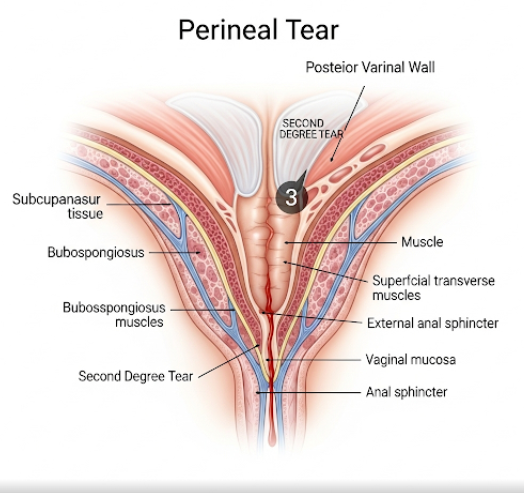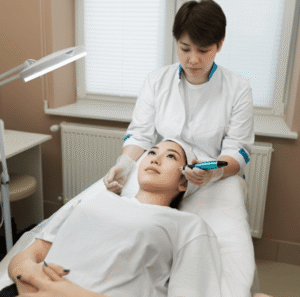Overview
A perineal tear is a common injury that occurs during vaginal childbirth. It involves the tearing of the perineum—the area between the vaginal opening and the anus. The severity of the tear can vary from minor skin lacerations to deeper muscle and tissue damage. Quick identification and appropriate treatment are essential for proper healing and to prevent complications.
What is a Perineal Tear?
A perineal tear happens when the tissues of the perineum stretch beyond their capacity during childbirth. These tears are categorized into four degrees based on their depth and extent:
- 1st-degree: Minor tear affecting only the skin.
- 2nd-degree: Involves both skin and muscle.
- 3rd-degree: Extends into the anal sphincter.
- 4th-degree: Involves the rectal lining in addition to skin, muscle, and anal sphincter.
Symptoms
The symptoms of a perineal tear depend on its severity. Common signs include:
- Pain in the perineal area
- Swelling or bruising
- Bleeding
- Discomfort while sitting or walking
- Painful urination
- In severe cases: fecal incontinence or anal pain
Causes
Perineal tears are usually caused by:
- Vaginal delivery, especially with a large baby
- Rapid labor or delivery
- Use of instruments like forceps or vacuum
- Delivering in a supine or lithotomy position
- Previous perineal tear or scar tissue
Risk Factors
Several factors increase the risk of a perineal tear, including:
- First vaginal delivery
- Large baby (macrosomia)
- Episiotomy (a surgical cut made during delivery)
- Shoulder dystocia
- Use of delivery instruments
- Short perineal length
Complications
If not properly treated, perineal tears may lead to:
- Infection at the wound site
- Chronic pelvic pain
- Painful intercourse (dyspareunia)
- Urinary or fecal incontinence
- Psychological effects such as postpartum depression or trauma
Prevention
Although not all tears can be prevented, some measures can reduce the risk:
- Perineal massage in late pregnancy
- Controlled delivery techniques to slow the baby’s head as it crowns
- Warm compresses on the perineum during labor
- Avoiding routine episiotomy
- Position changes during pushing (e.g., side-lying or hands-and-knees)
Treatment Options in Korea
South Korea offers advanced maternal care and perineal tear management through its modern OB/GYN facilities and skilled medical staff. Treatment options include:
- Minor Tears (1st and 2nd degree): Usually repaired with dissolvable stitches under local anesthesia; outpatient recovery.
- Severe Tears (3rd and 4th degree): Require surgical repair by experienced obstetricians or colorectal surgeons, often under regional or general anesthesia.
- Post-treatment Care: Korean hospitals offer comprehensive postpartum care including sitz baths, wound care, pain management, and pelvic floor physiotherapy.
- Preventive Counseling: Many maternity centers in Korea provide birth planning consultations that include perineal protection strategies.
Leading hospitals such as Seoul National University Hospital, Samsung Medical Center, and Chaum Women’s Hospital provide both emergency and elective care for childbirth-related injuries including perineal tears, making Korea a reliable destination for maternal health solutions.













